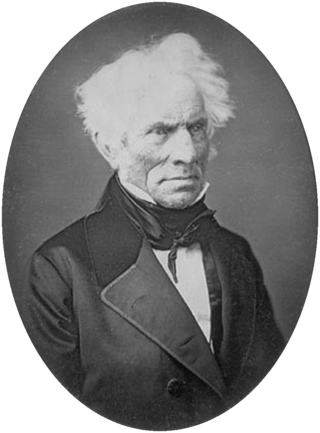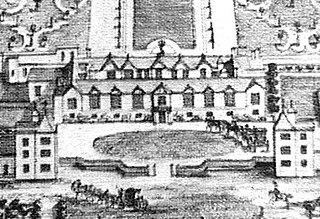
John Ray FRS was a Christian English naturalist widely regarded as one of the earliest of the English parson-naturalists. Until 1670, he wrote his name as John Wray. From then on, he used 'Ray', after "having ascertained that such had been the practice of his family before him". He published important works on botany, zoology, and natural theology. His classification of plants in his Historia Plantarum, was an important step towards modern taxonomy. Ray rejected the system of dichotomous division by which species were classified by repeated sub-division into groups according to a pre-conceived series of characteristics they have or have not, and instead classified plants according to similarities and differences that emerged from observation. He was among the first to attempt a biological definition for the concept of species, as "a group of morphologically similar organisms arising from a common ancestor". Another significant contribution to taxonomy was his division of plants into those with two seedling leaves (dicotyledons) or only one (monocotyledons), a division used in taxonomy today.
The conservation movement, also known as nature conservation, is a political, environmental, and social movement that seeks to manage and protect natural resources, including animal, fungus, and plant species as well as their habitat for the future. Conservationists are concerned with leaving the environment in a better state than the condition they found it in. Evidence-based conservation seeks to use high quality scientific evidence to make conservation efforts more effective.

John Evelyn was an English writer, landowner, gardener, courtier and minor government official, who is now best known as a diarist. He was a founding Fellow of the Royal Society.
This article presents lists of the literary events and publications in 1664.
Samuel Hartlib or Hartlieb was a Royal Prussian born, English educational and agricultural reformer of German-Polish origin who settled, married and died in England. He was a son of George Hartlib, a Pole, and Elizabeth Langthon, a daughter of a rich English merchant. Hartlib was a noted promoter and writer in fields that included science, medicine, agriculture, politics and education. He was a contemporary of Robert Boyle, whom he knew well, and a neighbour of Samuel Pepys in Axe Yard, London, in the early 1660s. He studied briefly at the University of Cambridge upon arriving in England.
The year 1662 in science and technology involved some significant events.

William Croone was an English physician and one of the original Fellows of the Royal Society.
Evelyn Arthur Smythies, CIE, was a distinguished forester and philatelist, born of British parents in India. Smythies was an expert on the ecology of Uttarakhand and Nepal. His careful studies of the earliest postage stamps of India, Jammu and Kashmir, Nepal, and Canada produced groundbreaking handbooks on which philatelists rely, even today.

Nicasius le Febure, a.k.a. Nicolas le Febure or Nicasius le Fevre or Nicolas le Fèvre, was a French chemist and alchemist who was appointed to positions by both French and English royalty.

François André Michaux was a French botanist, son of André Michaux and the namesake of Michaux State Forest in Pennsylvania. Michaux père botanized in North America for nearly a dozen years (1785–96) as royal collector for France.

American pioneers were European American and African American settlers who migrated westward from the Thirteen Colonies and later United States to settle in and develop areas of North America that were occupied by Native Americans.
John Beale was an English clergyman, scientific writer, and early Fellow of the Royal Society. He contributed to John Evelyn's Sylva, or A Discourse of Forest-Trees and the Propagation of Timber, and was an influential author on orchards and cider. He was also a member of the Hartlib Circle.
Richard Perrinchief or Perrincheif was an English royalist churchman, a biographer of Charles I, writer against religious tolerance, and archdeacon of Huntingdon.

Dr Gabriel Hemery is an English forest scientist (silvologist) and author. He co-founded the Sylva Foundation with Sir Martin Wood, a tree and forestry charity established in 2009.
John Evelyn the younger (1655–1699) was an English translator.
In horticulture, stratification is a process of treating seeds to simulate natural conditions that the seeds must experience before germination can occur. Many seed species have an embryonic dormancy phase and generally will not sprout until this dormancy is broken.
Sarah Simblet is a graphic artist, writer and broadcaster, who teaches anatomical drawing at the Ruskin School of Drawing and Fine Art and at the University of Oxford.
Maggie Campbell-Culver is a garden and plant historian, and a Fellow of The Linnean Society of London.

Wanstead Hall was the manor house for the Manor of Wanstead, now in the London Borough of Redbridge but historically in the county of Essex. It was later demolished to make way for the construction of Wanstead House.









